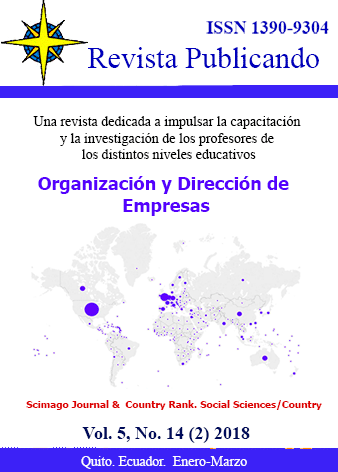Resumen
The main objective of this study is to examine the efficiency wage theory for Iranian factory industries in the 2-digit International Standard Industrial Classification (ISIC) level in 2001-2011. According to the efficiency wage theory, which is in fact one of the New Keynesian Economists Theories in labor market, reduction of wage is not explainable even under stagnation conditions. This is because; with reduction of wage, the best laborers leave their job and this can decrease workforce productivity. Therefore, in this theory, there is direct correlation between wage and productivity. In other words, efficient wages can enhance productivity. In this study, panel data regression has been used to test the said theory. The results obtained from estimating different models show that efficiency wage theory is not confirmed for Iranian industries. In other words, higher wages can improve productivity and efficiency of laborers in factory industries of Iran.
Referencias
Azvaji, A., Amini, A. (2008). Analysis of the relationship between wages and labor productivity in Iran's Industries: A self-correlated model with distributed lags, Iranian Journal of Economic Research, 12th Year, Issue 37.
Jafari Samimi, A., Rezaian Koochi, R. (2014). Testing the efficiency wage hypothesis in the basic metal industries of Iran, Second National Conference on Accounting, Management and Economics, Islamic Azad University, Fomen and Shafte Branch, August 2014.
Rahmani, T., Mazaheri Marbari, M. (2014). The impact of immigration on human capital accumulation and economic growth in developing countries (1975-2000), Journal of Research on Economic Growth and Development, Vol. 5, Issue 17, Pp. 61-74.
Rezaei, M., Jafari Moatar, F., Tajeri, M., Rezaei, V. (2015). The role of salary management on the productivity and efficiency of the staff working in media organizations, The First International Conference on the Role of Islamic Revolution Management in the Geometry of the Global Power System (Management, Politics, Economics, Culture, Security, Accounting), Tehran, Permanent Secretariat of the International Conference Political saga and economic saga.
Taee, H., Bahrami, J., Bagheri, Nazila. (2010). Is the wage in Iran's manufacturing industries determined by productivity? The Quarterly Journal of Economic Researches of Iran, Fourteenth, Issue 43, Pp. 141-160.
Kazerouni, A., Mohammadi, A. (2007). Investigating the relationship between productivity and wages in the industrial sector of Iran, Iranian Economic Research, Ninth Edition, Issue 31.
Sepehrdoost, H. Zamani Shabkhaneh, S. (2016). Investigating the effect of service compensation on labor productivity in industrial cooperatives in Iran, Journal of Economic Research (Sustainable Growth and Development), Sixteenth year, Issue 4, Pp. 193-211.
Motameni, M., Zarvaki, Sh. Bolbol Amiri, B. (2016). The role of human capital on the relationship between wages and labor productivity in Iran's industrial plant, Journal of Economic Growth and Development Research, The sixth year, Issue 23, Pp. 33-44.
Muhlau, p. and lindenberg, S. M. (2003) Efficiency wages: signals or incentives? An empirical study of the relationship between wage and commitment; journal of management and governance, 7: 385-400.
Mahlberg, B., Freund, I., Prskawetz, A. (2012). Ageing, Productivity and Wages in Austria: Sactor Level Evidence, Empirica,40:561-584.
Macphersona, D., Kislaya P. & Timothy S.(2014). “Deferred Compensation vs. Efficiency Wages: Anexperimental Test of Effort Provision and Self-Selection”.Journal of Economic Behavior & Organization, 102, 90–107.
Romaguera, P. (1991) Wage differentials and efficiency wage models: evidence from the Chilean economy; Kellog Institute Discussion Working Paper, No. 153.
Tamasauskiene, Z & Stankaityte, A. (2013). Evaluating of the Relationship between Wage and Labour Productivity in Lithuania: Territorial and Sectoral Approaches, Socialiniai tyrimai / social Research. Nr. 1 (30), pp. 24-35.
Yang Sheng-Ping and DeBeaumont Ronald (2010) Pay as incentive or pay as reward? The case of Taiwan. Journal of Asian Economics, vol. 21, issue 1, 76-86
Usted es libre de:
Compartir — copiar y redistribuir el material en cualquier medio o formato
Adaptar — remezclar, transformar y construir a partir del material
La licenciante no puede revocar estas libertades en tanto usted siga los términos de la licencia
Bajo los siguientes términos:
Atribución — Usted debe dar crédito de manera adecuada, brindar un enlace a la licencia, e indicar si se han realizado cambios. Puede hacerlo en cualquier forma razonable, pero no de forma tal que sugiera que usted o su uso tienen el apoyo de la licenciante.
NoComercial — Usted no puede hacer uso del material con propósitos comerciales.
CompartirIgual — Si remezcla, transforma o crea a partir del material, debe distribuir su contribución bajo la lamisma licencia del original.
